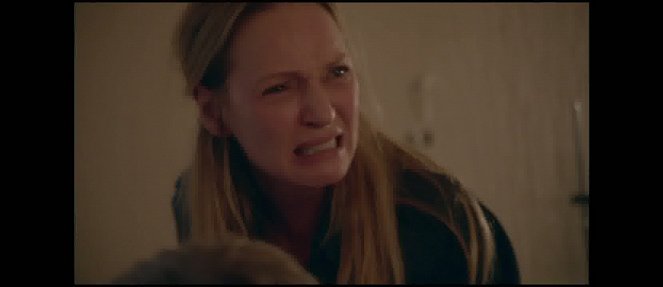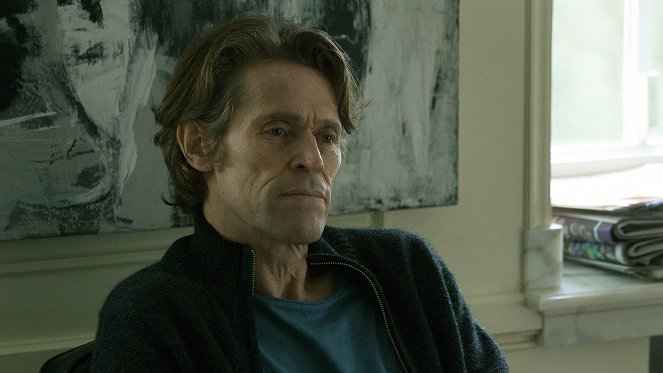Ohjaus:
Lars von TrierKäsikirjoitus:
Lars von TrierKuvaus:
Manuel Alberto ClaroNäyttelijät:
Charlotte Gainsbourg, Shia LaBeouf, Stellan Skarsgård, Stacy Martin, Willem Dafoe, Jamie Bell, Connie Nielsen, Mia Goth, Sophie Kennedy Clark (lisää)Suoratoistopalvelut (1)
Juonikuvaukset(1)
"Nymphomaniac" on villi ja runollinen kertomus naisen eroottisesta matkasta syntymästä 50 ikävuoteen. Tarinan kertoo itsensä nymfomaaniksi diagnosoinut nainen, Joe. Kylmänä talvi-iltana, vanha ja karismaattinen poikamies, Seligman, löytää pahoinpidellyn Joen kujalta. Seligman ottaa Joen mukaan kotiinsa, missä hän hoitaa tämän haavat ja samalla kyselee Joen elämästä. Seligman kuuntelee tarkasti kun Joe kertoo elämästään tarinan, joka sisältää paljon yksityiskohtia ja vaaratilanteita. (Nordisk Film Fin.)
(lisää)Videot (1)
Arvostelut (9)
My enthusiasm from the first Nymphomaniac can be summed up with the fact that I didn’t run to the cinema for the second part and waited for it without much interest for four months. And with similar lack of interest I spent two hours watching it, during which I looked at my watch more often that it would be healthy. There is something there, of course, Trier doesn’t make stupid empty stuff, and the climax is quite vibrant, but this time, the rules of his game didn’t work on me.
()
I have seen and am reviewing only the director’s cut of both parts of Nymph()maniac. For five and a half hours, the narrative about various methods of physical (self-)satisfaction, which is unsatisfying for viewers, confronts the two greatest themes of all Freudian directors – sex and death. The most striking merger of the two occurs during a drastic miscarriage, at the end of which Joe trembles with arousal, and in the chapter with the dying father, whose black-and-white picture and tone of emotional blackmail give such a (pseudo)artistic impression that it is most likely one of von Trier’s many tactics aimed at depriving viewers of what they want. In the course of both films, he employs a disturbing number of diversions, notional parentheses, jumps in time and changes in the style of the narrative in order to evoke a feeling of unease that makes it impossible to unobtrusively construct a story. The film brings to mind Zanussi with its hypermedia-style encyclopaedic layering of information, Buñuel with its thematisation of fetishes and unstable identity, Bergman with the intimate exploration of relationships, and Tarkovsky with its spiritual excitement (including a direct quote from The Mirror). Though this eclectic and intermedia compilation of styles is held together by the framework narrative, I would not call it a coherent form. How could there be a coherent film that is constructed as a dialogue between two seemingly incompatible worldviews (asexual and nymphomaniac) into which von Trier constantly tries to draw the viewer, whether by shattering visual taboos (I have never seen a more graphic depiction of abortion in a film) or by breaking down the fourth wall between fiction and reality (the camera reflected in a mirror, obvious parallels between the provocatively free-thinking views of Joe and von Trier himself). Despite all of the sexual explicitness and the extreme suffering of the female protagonist, the treatment of the female body seemed less exploitative to me than in, for example, Blue Is the Warmest Colour. Even though the woman becomes a sexual object several times, especially in the first part, and through most of the film her happiness depends on the man’s stamina, availability and abilities, her depiction elicits pain, compassion and disgust more frequently than pleasant feelings. In this context, the most beneficial scene of the director's cut may be the aforementioned abortion, which, with an openness that I believe will be particularly unpleasant for men, demonstrates throughout both films the intensified forms of defending a woman’s right to decide what she does with her own body. Showing us what we do not want to see is closely connected with consideration of that which we do not want to think about. In my opinion, such a provocation makes sense, like Nymph()maniac as a whole. 75% for part I, 80% for part II.
()
The first two-thirds of the second Nymphomaniac retain the power of the first film and, with the sadistic “Mr. K”, increases the audience’s discomfort to risky heights. But the final, “criminal” third raises the suspicion that Lars von Trier either didn’t know how to appropriately and meaningfully finish his work or he was overruled by the producers, who aimed for the biggest box-office profits possible (the absence of Shia LaBeouf in the role of Jerome, while all the others actors reprised their roles, suggests that the last third was filmed as an afterthought, after his contract expired). Finally, the last scene of the film is a bad joke, a slap with a glove full of coins that Nymphomaniac earned also by being split into two parts. In said scene, Trier completely (and unnecessarily) destroyed Stellan Skarsgård’s Seligman, a very important character for the story.
()
(Volume I)… which settles down a bit in the second half, when the forced overlaps disappear, and the director returns to his favorite theme of "woman as evil incarnate." This makes the film less long-winded but then comes Bond, 3+5, and golden rain, and the awkward impressions are broken even more than in Melancholia; please shrink the Director's Cut to two hours and without the asexual sex, though that's not really the point here (unexpectedly, right?).
()
The second part of Nymphomaniac starts as boring to give you a punch in the gut at the ending. Shia LaBeouf delivers an excellent performance, and Stellan Skarsgård’s acting remains solid. All the actors are without reproach, actually. We even see more of Charlotte Gainsbourg instead of her younger self played by Stacy Martin. Charlotte makes quite an impression with her nipples, which I’ll probably never forget. You don’t get to see nipples as pert as hers in movies much, if you see them at all. What is worse, however, is that Lars von Trier continued his episodic, meaningless narration, which is boring in places, interesting in others and way too philosophical in yet other moments. And this keeps going on until the moment when Stellan convinces you of something you would be better not knowing. After these almost four hours, the ending is a blow to a soul of every feeling viewer. I’m giving this film one star because Lars filmed it quite skillfully. It can’t be denied that he’s a good director, but all the rest in this film is pure suffering.
()



Mainos